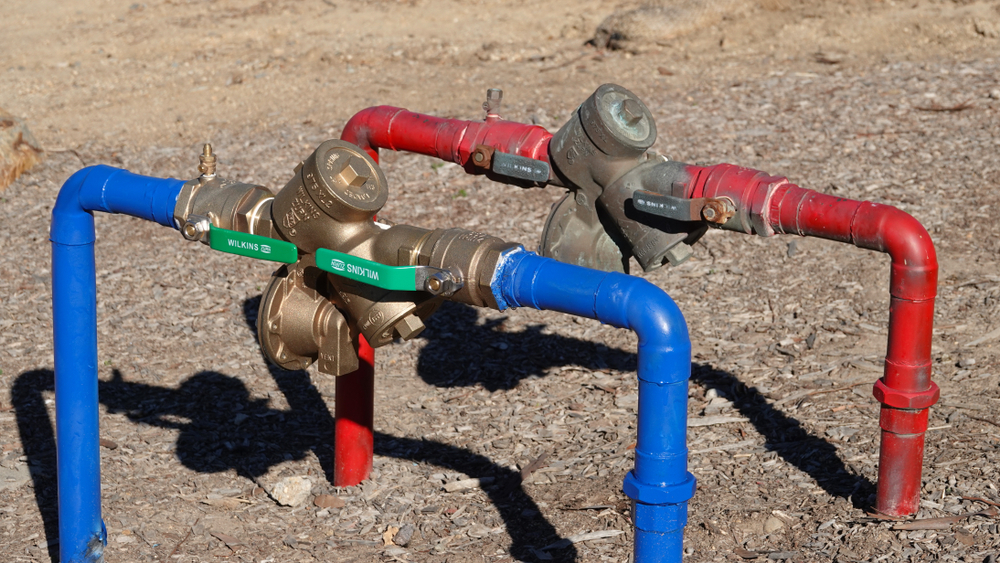Should I Carry out a Backflow Test on My Water System?
Should I Carry out a Backflow Test on My Water System?
Blog Article
Almost everyone has got their unique opinion in relation to Backflow Prevention.

Yes, you require to backflow examination your residence's water supply to guarantee that the water is devoid of toxic substances and dangerous degrees of chemicals. You need to not try to perform heartburn screening on your own since of the equipment needed as well as space for error. We recommend that you call an expert plumber every couple of years to test your water.
Backflow Can Influence Both You and also Your City
Numerous cities establish heartburn standards because unsafe heartburn can affect the general public water system in addition to a solitary structure. Modern cities have backflow devices in place that secure the water supply that comes from the majority of residences and business properties. The genuine threat comes from watering systems, which can hurt the supply of water with harmful fertilizers, manure, as well as other chemicals.
What Causes Backflow?
A typical cause of backflow is a loss of water pressure that causes the water to siphon back into the water supply. After some time, there is a loss in water stress as well as the tube starts to suck the water back right into the water supply. As you can think of, there are now chemicals from the paint that are getting in the water supply, potentially posing a danger.
Backflow Screening is Called For by Law in Specific Cities
Depending on where you live, you might in fact be called for by law to backflow test your regulation. Iowa City maintains a record of all homes served by the city's water supply.
You Can Stop Backflow
The main objective of a heartburn tool is to protect against water from streaming backwards right into your water supply. Plumbers mount the tool on the pipelines in your house to guarantee that the water only streams in the proper instructions.
What is Backflow?
In short, heartburn is when water moves upwards-- the opposite instructions in the plumbing system. This is additionally known as "backpressure." When the water moves in this instructions, it can mix with damaging contaminants as well as pose a threat.
Call a Plumber to Test for Backflow Before It is Far too late
A plumbing firm can rapidly check your residence's water to determine if there are any unsafe chemical levels. And if you do find that your water has high degrees of contaminants, a plumber can quickly set up a heartburn prevention gadget.
Yes, you need to backflow test your residence's water supply to make certain that the water is free of contaminants as well as damaging levels of chemicals. Several cities develop backflow standards due to the fact that dangerous heartburn can affect the public water supply in addition to a solitary structure. A common reason of heartburn is a loss of water pressure that causes the water to siphon back into the water supply. After some time, there is a loss in water pressure and the hose starts to draw the water back right into the water supply. The primary function of a backflow device is to avoid water from moving backwards into your water supply.
WHY DOES BACKFLOW TESTING NEED TO BE DONE EVERY YEAR
What Is Backflow?
Toxic gas backing up into a building is one example of potential backflow issues, but backflow can occur in many other ways.
Backflow is generally referred to as the reversal of a liquid or gas in a plumbing system.
Most issues for the public occur with backflow resulting in contaminated drinking water. If you look up backflow issues online you’ll probably find references to “potable” water. That means drinking water.
There have been backflow issues in the past with drinking water. Chemicals, sewage and other contaminants have found their way into drinking water causing health issues for those that count on the fresh water.
What Causes Backflow?
In a residence or commercial building water generally flows one way. This normal flow is usually driven by consistent pressure in the water and waste system.
Anything that changes the normal pressure in the system can lead to backflow.
Fire hydrant use or malfunction can reverse the normal pressure in the system on a city line, but backflow can occur in a number of different ways.
Sometimes backpressure might be caused by someone using a garden hose and submerging the end of the hose in a pool of liquid. If pressure is lost the flow could reverse and contaminants could be released into the drinking water.
Anytime there is a connection between contaminants and the drinking water there is potential for a backflow issue. Sometimes these connections are not immediately obvious like the garden hose connecting to a building’s drinking water supply.
Backflow Regulations
The Environmental Protection Agency (EPA) provides guidelines and regulations for state and local governments regarding backflow. State and local governments also have their own guidelines and regulations for backflow prevention.
Arizona has its own backflow regulations.
Due to issues with backflow in the past, regulations require backflow preventer devices to be used in nearly all residential and commercial buildings.
A backflow preventer is a device that prevents backflow as cross-connection points where potential backflow issues may occur.
While backflow is not a common occurrence, preventers are in place to make sure there is no contamination should something malfunction or go wrong with a building’s water supply.

I was guided to that editorial on What is Backflow Testing? from an acquaintance on our other web address. Sharing is good. You just don't know, you will be doing someone a favor. Kudos for your time. Come back soon.
Here
Report this page